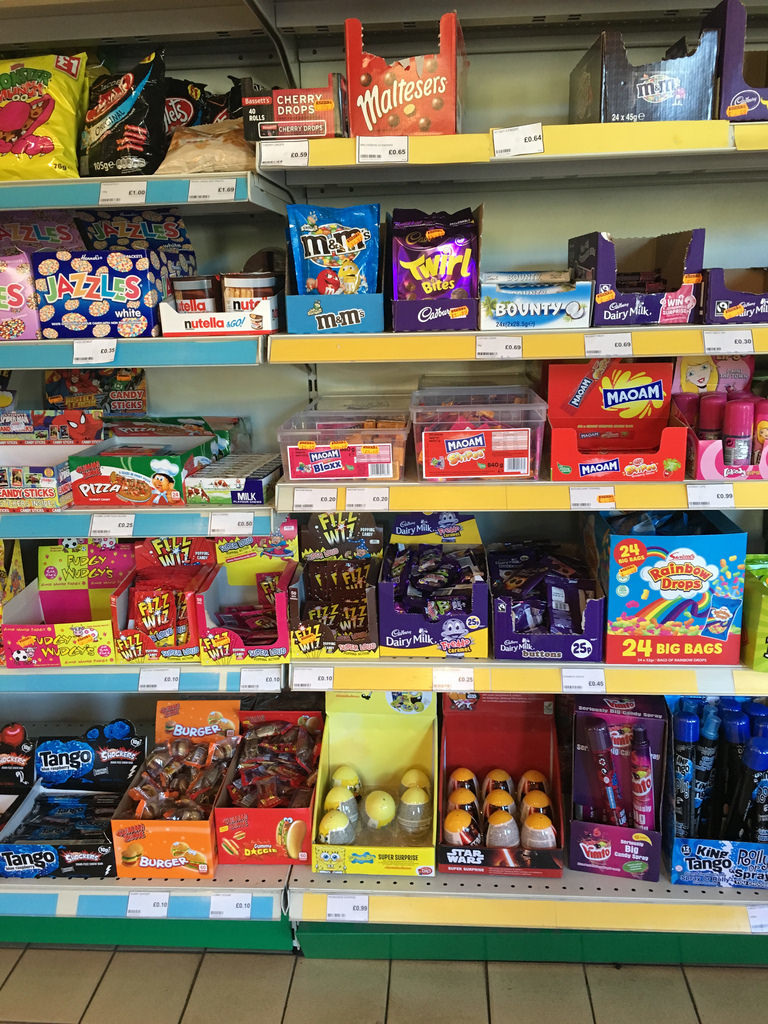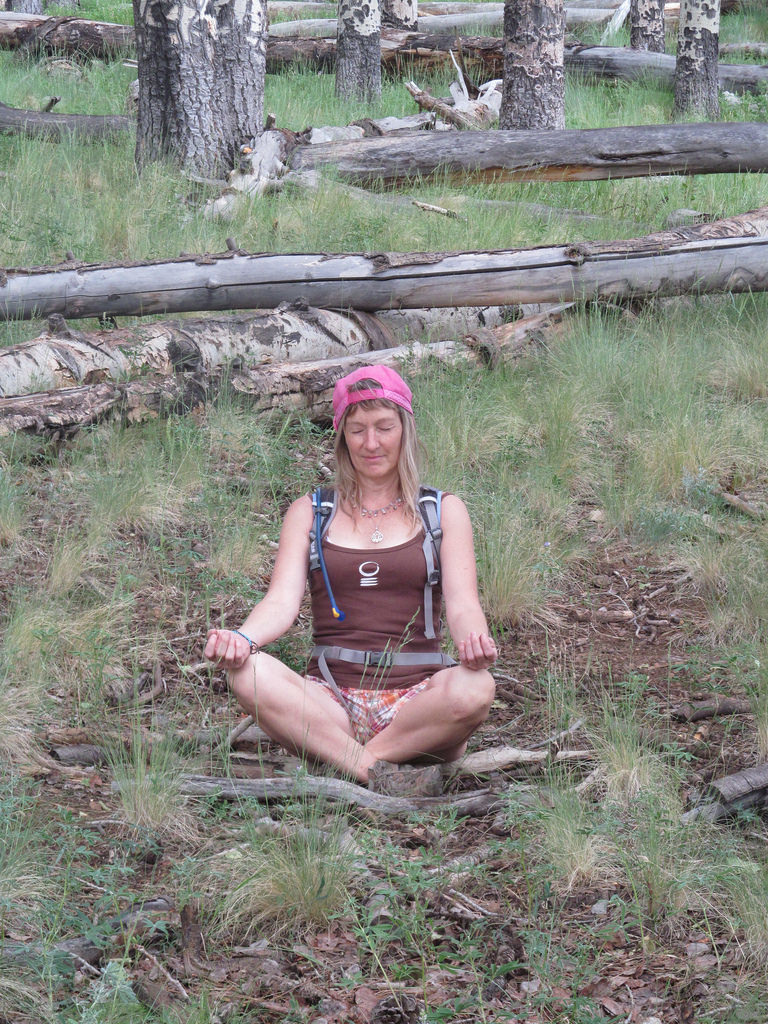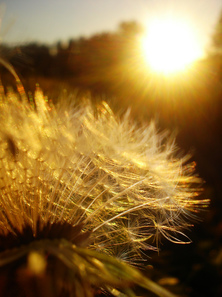Why do we need to worry about sugar? Sugar in the blood is not a bad thing on its own. In fact, without this important fuel we wouldn’t last very long. However, like most things, in the right amount we stay healthy, but when we have too little sugar or too much, that’s when problems arise. Our main method of procuring this fuel is eating and drinking. Anything we consume, our body breaks down into it’s most basic building blocks, glucose, which is sugar, being one of them. Once broken down, the body shuttles the glucose to where it’s needed. If you’re playing a game of tag, then you’re going to need glucose for your muscles. If you’re studying for a big test, then you need glucose for your brain. The blood is simply the highway system in your body that transports the glucose (along with many other things) throughout the body until it reaches it’s final destination.
What can we do? Eating Well We know that balance is important, but what are some easy and crucial things we can do to improve our blood sugar balance. One, you may have guessed, is being mindful of what you eat! Proper nutrition is really a cornerstone of good health. Start with eating a diet focused on good whole foods, which includes 5-10 servings of fruit and vegetables a day, whole grains (complex carbs), good proteins and healthy fats. Then avoiding excess sugar, like soft drinks. Did you know that there can be as many as 6-10 tbsp of sugar in 1 can of pop? Another helpful trick is to have either protein or fat with each meal. Not only do they help you feel more full for longer, they also modulate the rush of sugar coming into the body. If we’re looking at a curve of blood sugar levels, this is what happens if we have sugar by itself, a big spike and then decline about an hour to a few hours later. This is why people who have a chocolate bar for their afternoon snack feel like they have lots of energy and focus for the first hour or so after, but end up feeling more tired later on when their blood sugar plummets. If you eat fat or protein with your other foods, it helps to temper this spike in blood sugar so you don’t have a huge increase and subsequent decrease of blood sugar and corresponding energy levels.
Blood sugar levels have a story to tell about our health, and every choice you make with your diet and lifestyle habits writes that story. Make sure you make the right choices for you: eat right, exercise and modify your stress. Your family and your future self will thank you for taking steps to ensure that your blood sugar story is writing about a long and healthy future.
Have questions about how you and your family can reduce your sugar intake? Ask me about it by emailing me through the 'contact me' section or give me a shout at the office. I'm here to help you achieve your best possible health. Note: Talk to your Naturopathic Doctor today about getting assessed and treated if needed, and as always talk to your health care provider before beginning any new medication or supplement. This information is not meant to replace the advice/guidance of a medical professional, nor should it be acted upon by individuals unsupervised by the appropriate healthcare provider. References: Silverthorn, D.U. 2010. Human Physiology An Integrated Approach. Fifth Edition. Pearson International Edition. Stats Canada. 2016. Obesity in Canada: A Whole-of-Society Approach to a Healthier Canada: http://www.parl.gc.ca/content/sen/committee/421/SOCI/Reports/2016-02-25_Revised_report_Obesity_in_Canada_e.pdf WebMD. Fit Jr. (2016). Just a Spoonful of Sugar Adds Up: http://fit.webmd.com/jr/food/pdf/pdf-sugar-adds-up
2 Comments
Cold and Flu season stats To start, there are over 200 different viruses cause influenza and influenza-like illness (fever, headaches, aches and pains, coughs, runny nose). According to a recent Cochrane review, the flu vaccine might only be effective against Influenza A and B, which represents about 10% of all circulating viruses (Jefferson et al, 2013). The authors’ conclusion from that review was, “Influenza vaccines have a modest effect in reducing influenza symptoms and working days lost. There is no evidence that they affect complications, such as pneumonia, or transmission.” (Jefferson et al., 2013). Period of Contagiousness You may be able to pass on the flu to someone else before you know you are sick, as well as while you are sick. Most healthy adults may be able to infect others beginning 1 day before symptoms develop and up to 5 to 7 days after becoming sick. Some people, especially young children and people with weakened immune systems, might be able to infect others for an even longer time. How Flu Spreads Most experts believe that flu viruses spread mainly by droplets made when people with the flu cough, sneeze or talk. These droplets can land in the mouths or noses of people who are nearby. Less often, a person might also get flu by touching a surface or object that has flu virus on it and then touching their own mouth, eyes or possibly their nose.
Additional Helpful Measures Think drinking tea is just for your grandma? Well think again! Herbal Teas In a Harvard study, they found that people who drank 5 cups a day of black tea for 2 weeks had 10 times more virus-fighting interferon in their blood than others who drank a placebo hot drink. The amino acid responsible for this immune boost, L-theanine, is abundant in both black and green tea—decaf versions have it, too. Your optimal dose: Several cups daily. To get up to five times more antioxidants from your tea bags, bob them up and down while you brew.
Infusion vs. Decoction
An infusion is a water-based preparation made by steeping leaves, flowers, and other non-woody parts of a plant in either hot or cold water. The traditional cup of herb tea is the archetypal infusion. A decoction is also water based, but it’s done by gently simmering the herb in boiling water. This method is used for tougher plant parts, such as roots, barks and seeds. Powders: What are they good for? Usually when people think of tea they think of the leaves and flowers of the plant in a cup of hot water. However, there are certain herbs that are better made into an infusion using the powdered form. For example, some herbs are rich in volatile oils that are medicinally useful and when boiled will evaporate and be lost. Valerian root is an example of a woody part that would be better ground to powder and prepared as an infusion. The preparation method usually depends on the use of the herb. This is why it is important to consult with a trained practitioner because they can help you select the most appropriate herb and preparation method based on your particular health concerns. Note: This presentation is not meant to replace the advice of a trained practitioner. In order to formulate a proper treatment plan, you should consult with your Naturopathic Doctor or other health care provider. Resources: Center for Disease Control and Prevention. (2013). Seasonal Influenza: Key Facts about Influenza (Flu) & Flu Vaccine. http://www.cdc.gov/flu/keyfacts.htm Hoffmann, D. (2003). Medical Herbalism: The Formulation and Preparation of Herbal Medicines. Healing Arts Press. Print. Jefferson et al. (2013). Vaccines to prevent influenza in health adults. http://summaries.cochrane.org/CD001269/vaccines-to-prevent-influenza-in-healthy-adults. Ontario Association of Naturopathic Doctors. (2013). Staying Healthy in Cold and Flu Season. http://www.oand.org/staying-healthy-in-cold-and-flu-season/ Public Health Agency of Canada. (Nov 2, 2013). Flu Watch: Influenza/ILI Activity (geographic spread). http://www.phac-aspc.gc.ca/fluwatch/13-14/w44_13/pdf/fw2013-44-eng.pdf
False Claims Then there’s the issue of the various claims that sunscreen manufacturers make about their products. Based on the research that’s been completed to date, there is insufficient data to support most claims on the sunscreen bottle. Claims such as: ‘waterproof’, ‘sweatproof’ and ‘broad spectrum protection’ don’t hold up. In fact, probably the most misleading is ‘cancer protection’ or ‘prevents cancer’. Sunscreen alone has not actually been shown to protect against certain forms of skin cancer, particularly melanoma, which is the most deadly form of skin cancer. Melanoma and Other Skin Cancers Why should we be concerned about melanoma? Well, since 2000, the rates of new melanoma cases among both men and women have been climbing by 1.4 to 1.6 percent per year (CDC 2014). A number of studies conducted in the 1990s reported higher incidence of melanoma among frequent sunscreen users (Autier 1998, Beitner 1990, Westerdahl 2000, Wolf 1998).
SPF: Is Bigger Better? Does SPF or the Sun Protection Factor make a difference? Most of us believe that Bigger Is Better, but there is no definitive evidence of increasing protection as the SPF values increase. In fact, beyond SPF 50, there appears to be little benefit. Properly applied SPF 50 blocks approximately 98% of sunburn rays. Properly applied SPF 100 blocks 99%. When used correctly, sunscreen with SPF values in the range of 30 to 50 will offer adequate sunburn protection, even for people most sensitive to sunburns.
Oxybenezone and 4-MBC are hormone disruptors and frequently used UV filters used in sunscreens. Oxybenzone could be found in about 70% of the non-mineral sunscreens evaluated by the EWG this year. Retinyl Palmitate and other Vitamin A derivatives have been shown to result in more skin tumors and lesions on animals treated with this ingredient and then exposed to sunlight. While MI, has actually been labeled as an inactive ingredient or preservative, was called ‘the allergen of the year’ by the American Contact Dermatitis Society in 2013. In March 2015, the European Scientific Committee on Consumer Safety concluded that no concentration of MI could be considered safe in leave-on cosmetic products (EU SCCS 2014). MI is present in 66 sunscreens assessed in this year’s report. What to Look for in a Good Sunscreen All these concerns in mind, what can we do to better protect ourselves from the harmful effects of sun exposure? One thing, when using sunscreen, pick the right one. Based on current research, mineral sunscreens tend to rate best, particularly those with zinc oxide or titanium dioxide. They are stable in sunlight, offer a good balance between protection from the two types of ultraviolet radiation (UVA and UVB) and don’t often contain potentially harmful additives. (EWG report, 2016).
Sunscreen is a helpful tool for protecting your skin from the harmful effects of the sun when used appropriately. Be sure to use it as recommended, and choose a sunscreen that has minimal/no harmful chemicals in it, particularly a mineral based one. Keep these things in mind, and the additional measures you can take to protect your skin, and you can help decrease your risk of developing serious illnesses like skin cancer.
 Colds & Flus and the accompanying cough that goes with them, are a common household problem, particularly during the winter months. The following is a recipe for making your very own all-natural cough syrup at home. This can be used with adults or children over the age of 1 (different remedies can be used for those under 1 year), tastes better than it sounds, saves money, and is more effective than over the counter (OTC) varieties. Why use Natural Cough Syrup instead of OTCs? The research supports the ineffectiveness of cough syrups and other similar products. A 2010 review of studies found that there is no evidence to support using common over-the-counter drugs for cough. This includes cough suppressants, such as dextromethorphan, or expectorants such as guaifenesin, which are supposed to loosen up mucus in the airways. In 2008, the FDA recommended avoiding the use of cough syrup in children under the age of 4 because there was no proof of effectiveness, and little research on side effects. The American Academy of Pediatrics took this a step farther, saying to avoid use in children under 6. What they did find through further study was honey proved to be mildly effective, but is not to be given to children under 1 year. Note: If you have a productive cough (are bringing up mucous when you cough) avoid suppressing it. Coughing is important for loosening the phlegm or mucous and getting it out of your lungs.
Directions
· Slice the onion evenly. Place the base of the onion in your jar, and then pour honey in a layer over it (or cover in a layer of sugar, if that’s your sweetener of choice.) · Continue to alternate layering the onion and sweetener. When you’re finished, cover tightly and let it sit overnight out on the counter, or for 8-12 hours. · After it has sat out, there will now be liquid in the jar. Use a spoonful as needed to control your cough (3 spoonful’s an hour, if needed.) · You can use both the honey and brown sugar if you like, just adjust the layering accordingly, and remember that it will be sweeter! · If you choose to use garlic, unlike onion, there is no exact amount to put in. Start with 9-12 cloves or so roughly chopped and find your flavor balance from there. Just remember you shouldn’t use too little; otherwise it won’t work as well. Directions for kids · If you have a child too young to have honey, don’t despair because every single home cough remedy seems to have honey in it! The above recipe can be safely made for kids-just omit the honey and use only the sugar. Note: This syrup should be used fresh. After you make it, you can store it in the fridge for up to 2 days. After that, just whip up another batch. Note: This information is not meant to replace the advice of a trained practitioner. In order to formulate a proper treatment plan, you should consult with your Naturopathic Doctor or other health care provider. References: Griffin, R.M. (2014) Cough Medicine: Should You or Shouldn’t You? Get the facts on cough medicine. Chang, L. (Ed.) WebMD Feature. http://www.webmd.com/cold-and-flu/features/cough-medicine-should-you-shouldnt-you Everyday Roots (2013). Homemade Cough Syrup. http://everydayroots.com/homemade-honey-and-onion-cough-syrup  There are many things we all can do to keep ourselves healthy, eating a diet rich in fruits and vegetables, getting enough sleep, drinking enough water, the list goes on. One important part to avoiding colds and flus is minimizing unnecessary exposure to microbes that can potentially lead to illness. This is the reason why we put so much emphasis on hand washing and hygiene because these practices have been very useful in decreasing the incidence of disease. One of the early pioneers for sanitization practices was a German doctor by the name Ignaz Semmelweis. Dr. Semmelweis noticed that when hands were washed in obstetrical clinics regularly the incidence of puerperal fever was drastically reduced. Normally, puerperal fever carried a 10-35% mortality rate among mothers in the mid 19th century. Due to his diligent efforts and others of that time period, hand washing practices became common place over time. Another practice that has drastically increased is the use of various disinfectants and sanitizers. You can’t go into a hospital without coming across several alcohol disinfectant dispensers. Some people even make it common practice to carry bottles or wipes of alcohol based disinfectant in their purses or cars just in case. However, are they actually as effective as we think they are at dealing with microbes? Sterilization vs. Disinfection First, let’s get some terms straight. Sanitizing or sterilizing is not the same as a disinfectant. Both procedures do destroy bacteria, viruses and fungi but not to the same extent. According to the CDC (Center for Disease Control), sterilization is defined as, “Any item, device, or solution is considered to be sterile when it is completely free of all living microorganisms and viruses. The definition is categorical and absolute (i.e., an item is either sterile or it is not).” Whereas disinfection is defined as, “…less lethal process than sterilization. It eliminates nearly all recognized pathogenic microorganisms but not necessarily all microbial forms (e.g., bacterial spores) on inanimate objects. Disinfection does not ensure an “overkill’’ and therefore lacks the margin of safety achieved by sterilization procedures.” (CDC). Understanding the difference between these terms is important because the types of cleaners and other products we use to achieve cleanliness are of varying strengths on the disinfectant spectrum. Due to the harshness of sterilization methods it’s not possible to sterilize people. Also remember there are ‘good’ and ‘bad’ bacteria, and we need the good bacteria to survive. If all forms of bacteria were wiped out from our bodies we would actually be susceptible to infection by the bad bacteria. Classes of Disinfectant When we’re discussing what kinds of things are good to use for cleaning and keeping ourselves healthy we need to think about the level of disinfectant needed. Disinfectant products are categorized from high to low disinfectant properties. They are defined as follows: High disinfectant: This procedure kills vegetative microorganisms and inactivates viruses, but not necessarily high numbers of bacterial spores. Such disinfectants are capable of sterilization when the contact time is relatively long (e.g., 6 to 10 hours). As high-level disinfectants, they are used for relatively short periods of time (e.g.,10 to 30 minutes). These chemical germicides are potent sporicides and, in the United States, are classified by the FDA as sterilant/disinfectants. They are formulated for use on medical devices, but not on environmental surfaces such as laboratory benches or floors. Intermediate disinfectant: This procedure kills vegetative microorganisms, including Mycobacterium tuberculosis, all fungi, and inactivates most viruses. Chemical germicides used in this procedure often correspond to Environmental Protection Agency (EPA)-approved “hospital disinfectants” that are also “tuberculocidal.” They are used commonly in laboratories for disinfection of laboratory benches and as part of detergent germicides used for housekeeping purposes. Low disinfectant: This procedure kills most vegetative bacteria except M. tuberculosis, some fungi, and inactivates some viruses. The EPA approves chemical germicides used in this procedure in the US as “hospital disinfectants” or “sanitizers”. To help you understand what kinds of chemicals and products are categorized under each of these subheadings, take a look at the following table: Activity Levels of Selected Liquid Germicides
As you can see the sterilization agents kill everything, but the disinfectant agents have a great deal of variability. Probably the two you’re most familiar with are the hydrogen peroxide and alcohols (ethyl and isopropyl). The hydrogen peroxide and alcohol people typically use would be in the intermediate category at best. So they do help to kill off most organisms, but not all of them. The CDC also mentions that the effectiveness of alcohols is limited, “…they evaporate rapidly, resulting in short contact times, and also lack the ability to penetrate residual organic material. They are rapidly tuberculocidal, bactericidal and fungicidal, but may vary in spectrum of virucidal activity. Items to be disinfected with alcohols should be carefully pre-cleaned then totally submerged for an appropriate exposure time (e.g., 10 minutes).”
Should We Use Hand Disinfectants? So this all comes down to whether it’s worthwhile to use such products as ethyl alcohol hand disinfectants, or if we should just be washing our hands a lot more. As we’ve seen, the alcohol and other such products can be useful to eliminate bacteria, but not completely. So it is certainly better than using nothing at all, but definitely the more effective method is actually washing your hands with soap and water. They should be used as a complimentary measure as opposed to a replacement for hand washing. There are also natural alternatives to alcohol-based products that use plant essential oils and no additional chemicals. These natural products are a nice alternative because essential oils are plants natural defense mechanism against bacteria and are less likely to react with sensitive skin. One example of a product is Clean Well, which is alcohol, paraben and triclosan free. Ultimately, the choice is yours to make. If you do choose to use an alcohol-based disinfectant, make sure it’s at least 70% ethyl or isopropyl and it does not contain any additional chemicals. References: CDC. Biosafety: Appendix B – Decontamination and Disinfection. http://www.cdc.gov/biosafety/publications/bmbl5/bmbl5_appendixb.pdf Clean Well. All the Facts. http://www.cleanwelltoday.com/a-better-way-to-clean/all-the-facts/ Disinfectant vs Sanitizers. University of Hillyard. http://www.hillyard.com/ProductsServices/UniversityofHillyard/Disvsant.htm Semmelweis Society International. Biography of Ignaz Philipp Semmelweis. http://www.semmelweissociety.org/Biography.aspx |
Sarah Connors
I am a Naturopathic Doctor and Doula providing care in the Kitchener-Waterloo area. I have a passion for helping people with their health issues and improving the birth experience for Moms, and their babies. I also have a life long love affair with soccer, curling, and the alto saxophone. Archives
November 2020
Categories
All
|
Photos from Rural Royalty, manu flickr2010, Ryan Dickey, wocintechchat, huskyte77, paulswansen, Black Room Photography, harum.koh, Emery Co Photo, JeepersMedia, BrownGuacamole, wellnesswildflower, JeepersMedia, vastateparksstaff, colindunn, seelensturm, /\ \/\/ /\, 50mm.za, The Simpsons (Lee, Shirley, Luke and Rachel), AGRONAUTI, aivas14, Jonathan Rolande, winnifredxoxo, juhansonin, osseous, nan palmero, Theo Crazzolara, brianfagan, TP studio, wuestenigel, torbakhopper, anka.albrecht, Michael Stern, [-ChristiaN-], franchiseopportunitiesphotos, terren in Virginia, nateOne, barnimages.com, Dun.can, wuestenigel, @lattefarsan, amandabhslater, aphrodite-in-nyc, nutritionaldoublethink, Anne Worner, donnierayjones, mikecogh, angeloangelo, Rob.Bertholf, getaiwan, Lida Rose, matsuyuki, SurFeRGiRL30, marcoverch, amsfrank, mdaltry, nutrition education, Mike Prince, Edsel L, Neighborhood Nini, philipp.alexander.ernst, Mediocre2010, homethods, quinn.anya, Gamma Man, katerha, Eric Kilby, National Institutes of Health (NIH), rcmd_cfdfw_5_2, curtis palmer, Ray in Manila, frankieleon, Airsoftpal.com, byzantiumbooks, cchana, Brian Legate, Matt Lavin, BradHinton, monpetitchouphotography, wuestenigel, alexisjordanlewis, ByEPhotos, erix!, RLHyde, return the sun, quinn.anya, mliu92, frankieleon, loudista, Lyn Lomasi, upslon, derrickbrutel, cchana, National Institutes of Health (NIH), watts_photos, marcoverch, derrickbrutel, francesbean, weegeebored, Airsoftpal.com, Etwood, wu_135, shixart1985, Ingrid Taylar, VeritasFotografie, BioDivLibrary, emmanuelmorales1, Thanks for 1.5 Million Views!!, Will Merydith, reader of the pack, RoxyHobbs, Khanelle Prod' Medias, storyvillegirl, agromonitor, Arenamontanus, six:eleven, cote, SweetOnVeg, nenoirenediaz, lucianvenutian, markhillary, anotherlunch.com, inkknife_2000, archibald jude, rawtrigger, Imaginary Museum Projects: News Tableaus, Pavel P., Courtney Emery, Thien Gretchen, physiognomist, bark, Michigan Municipal League (MML), alberth2, Merelymel13, neofob, Care_SMC, Parker Knight, B*2

















 RSS Feed
RSS Feed
